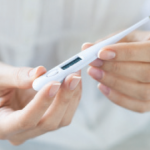I reexamined him. He was beginning to look like photos of President Lincoln. His flesh had a pasty, droopy quality to it. Fat and muscle were melting away. Besides the inflammatory arthritis, his exam was essentially unchanged, except, I kept coming back to a hint of fullness beneath his right armpit. Was that a palpable lymph node? “Mr. Woodle,” I decided, “I’m admitting you today. We’ll schedule you for a CT scan of the chest and abdomen. If we find something suspicious, we’ll get it biopsied. If not, I’ll consult hematology; you may need a bone marrow aspiration.”
“Fine. Let’s get it done. I’m no good this way.”
Maybe I’ll be lucky, I thought, realizing with a start that I’d drifted into the same vague differential diagnostic morass I’d criticized his primary doctor for. Still, maybe I’ll be lucky.
More Tests
Only I wasn’t. The CT scans showed some background noise; the pancreas was scarred (probably the result of his past heavy drinking), and the spleen was a little generous in size, but nothing abnormal enough to biopsy. Hematology initially balked at performing the bone marrow. Dr. Hedlund argued, justifiably, that the patient’s anemia was secondary to his inflammatory illness and that the flow cytometry they performed on his blood essentially ruled out leukemia. There was almost no chance a bone marrow would be diagnostic of a specific disease.
But I pushed for the bone marrow based on a hunch. Mr. Woodle’s case stayed with me after hours. I found myself drifting back to it at night and sometimes when I awoke in the morning. I reviewed his clinical course, the nonspecific lab and turned over the possibilities in my mind. None of the possible diagnoses fit. Even the extraordinarily rare diseases I’d encountered during the past several decades—adult-onset Still’s disease, GPA, Behçet’s syndrome—had characteristic findings Mr. Woodle lacked. During a follow-up phone call with Dr. Hedlund in hematology, I limply suggested that sarcoidosis can hide out in the bone marrow and be the cause of sweats and fevers, and muscle and joint pain.
“Sarcoidosis?” Dr. Hedlund repeated. “You think that with a normal chest X-ray, and an essentially normal chest, abdomen and pelvis CT scan that he has sarcoidosis?”
I could hear her tapping her fingers in the background. She wanted to get off the phone and do something productive. “Yes,” I heard myself saying. “Isolated granulomas in the bone marrow have been reported with sarcoidosis.”

